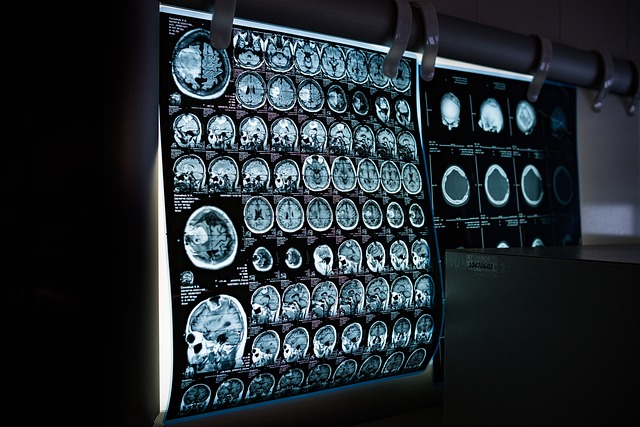Understanding Epilepsy Medication and Side Effects
Epilepsy medications can vary in how they work and what side effects they cause. Learn about commonly prescribed treatments, what to watch for, and how to discuss concerns with a healthcare provider. Read to make sure you know the side effects and the right medication for you.

Common Types of Epilepsy Medications
Antiseizure medications (ASMs), also called anticonvulsants, form the cornerstone of epilepsy treatment. These medications work primarily by calming hyperactive brain activity that triggers seizures. The main categories include sodium channel blockers (like carbamazepine and lamotrigine), GABA enhancers (such as valproate and benzodiazepines), and medications with multiple mechanisms (like levetiracetam and topiramate). The selection depends on several factors, including seizure type, patient age, gender, other health conditions, and potential drug interactions. First-generation medications like phenobarbital and phenytoin have been in use for decades, while newer options like lacosamide and brivaracetam offer different benefit-risk profiles and may have fewer interactions with other medications.
Short-Term Epilepsy Medication Side Effects
When beginning epilepsy treatment, patients commonly experience temporary side effects that typically diminish as the body adjusts. These initial reactions often include drowsiness, dizziness, fatigue, headaches, and blurred vision. Gastrointestinal issues like nausea, vomiting, and changes in appetite may also occur during the adjustment period. Cognitive effects such as mild confusion, memory issues, or difficulty concentrating can be particularly challenging for students or working professionals. It’s important to note that these effects usually appear most prominently when starting medication or increasing dosages, and many patients find they subside within a few weeks as tolerance develops. Keeping a symptom journal during this period can help healthcare providers determine whether dosage adjustments are needed.
Long-Term Side Effects of Epilepsy Medication
Long-term use of certain epilepsy medications may lead to more persistent side effects that require ongoing management. Bone health concerns are significant with medications like phenytoin and carbamazepine, which can reduce bone density over time, potentially increasing fracture risk. Weight changes—either gain with valproate and gabapentin or loss with topiramate and zonisamide—may affect body image and overall health. Some medications carry risks during pregnancy, with valproate particularly associated with higher rates of birth defects and developmental issues. Long-term cognitive effects can include word-finding difficulties or memory problems. Additionally, mood changes such as depression or irritability may develop gradually and might be difficult to distinguish from epilepsy’s psychological impact itself.
Managing Epilepsy Medication Side Effects
When side effects become problematic, several strategies can help improve quality of life while maintaining seizure control. Dosage adjustments often make a significant difference—sometimes a slight reduction can eliminate side effects while preserving therapeutic benefits. Extended-release formulations can reduce peak-level side effects by providing steadier medication levels throughout the day. Taking medications with food may help minimize gastrointestinal symptoms, while adjusting timing can help manage drowsiness (taking sedating medications before bedtime rather than in the morning). Supplemental therapies may counteract specific side effects—for example, vitamin D and calcium supplements for bone health concerns with certain medications. For some patients, switching to a different medication may be necessary if side effects remain intolerable despite adjustments.
Different Medication Options for Various Epilepsy Types
Epilepsy treatment is increasingly personalized based on seizure type and syndrome. For focal (partial) seizures, medications like carbamazepine, lamotrigine, and levetiracetam are typically first-line options due to their efficacy and generally manageable side effect profiles. Generalized seizures often respond well to valproate, though concerns about its use in women of childbearing age have led to alternatives like lamotrigine or levetiracetam becoming more common first choices for these patients. Absence seizures typically require specific medications like ethosuximide or valproate, as some anticonvulsants may actually worsen this seizure type. For patients with Lennox-Gastaut syndrome or Dravet syndrome—severe forms of epilepsy—medications like clobazam, cannabidiol, or stiripentol may be recommended as part of combination therapy approaches.
Comparing Common Epilepsy Medications and Their Side Effects
| Medication | Common Use | Typical Side Effects | Special Considerations |
|---|---|---|---|
| Levetiracetam (Keppra) | Broad spectrum for focal and generalized seizures | Irritability, mood changes, fatigue | Often first-line due to minimal drug interactions |
| Lamotrigine (Lamictal) | Focal seizures, generalized seizures, bipolar disorder | Rash (rarely serious), dizziness, headache | Requires slow titration to reduce rash risk |
| Valproate (Depakote) | Generalized seizures, migraines, bipolar disorder | Weight gain, hair loss, tremor, liver effects | Not recommended for women of childbearing age |
| Carbamazepine (Tegretol) | Focal seizures, trigeminal neuralgia | Dizziness, double vision, low sodium, rash | Requires blood level monitoring |
| Topiramate (Topamax) | Focal seizures, migraines | Weight loss, cognitive slowing, kidney stones | Can cause metabolic acidosis |
| Gabapentin (Neurontin) | Adjunctive for focal seizures, neuropathic pain | Drowsiness, dizziness, weight gain | Lower efficacy as monotherapy |
Prices, rates, or cost estimates mentioned in this article are based on the latest available information but may change over time. Independent research is advised before making financial decisions.
Talking to Your Doctor About Epilepsy Medication Concerns
Open communication with healthcare providers is essential for optimizing epilepsy treatment. When discussing concerns, be specific about side effects—describing exactly how symptoms affect daily activities helps providers gauge their significance. Tracking seizures and side effects in a diary creates valuable data for appointments, helping identify patterns related to medication timing or dosage. Questions about alternative medications, dosage adjustments, or complementary treatments are appropriate and encouraged. If pregnancy is planned or possible, this must be discussed proactively, as medication adjustments may be necessary to protect fetal development. Remember that multiple appointments may be needed to find the ideal treatment approach, and sudden medication changes should never be made without medical supervision, as this can trigger breakthrough seizures.
Living with epilepsy often means finding a personal balance between seizure control and medication side effects. Through collaboration with healthcare providers, patience during adjustment periods, and honest communication about treatment concerns, most patients can achieve improved seizure control while maintaining good quality of life. The landscape of epilepsy treatment continues to evolve, with newer medications offering different side effect profiles and potentially better outcomes for many patients.
This article is for informational purposes only and should not be considered medical advice. Please consult a qualified healthcare professional for personalized guidance and treatment.




